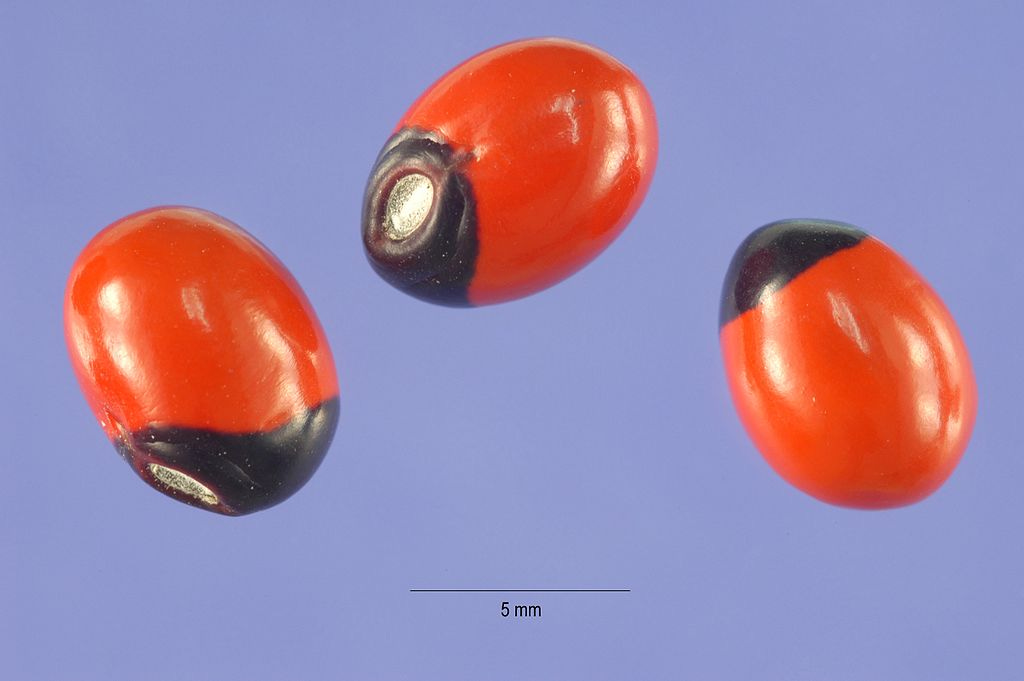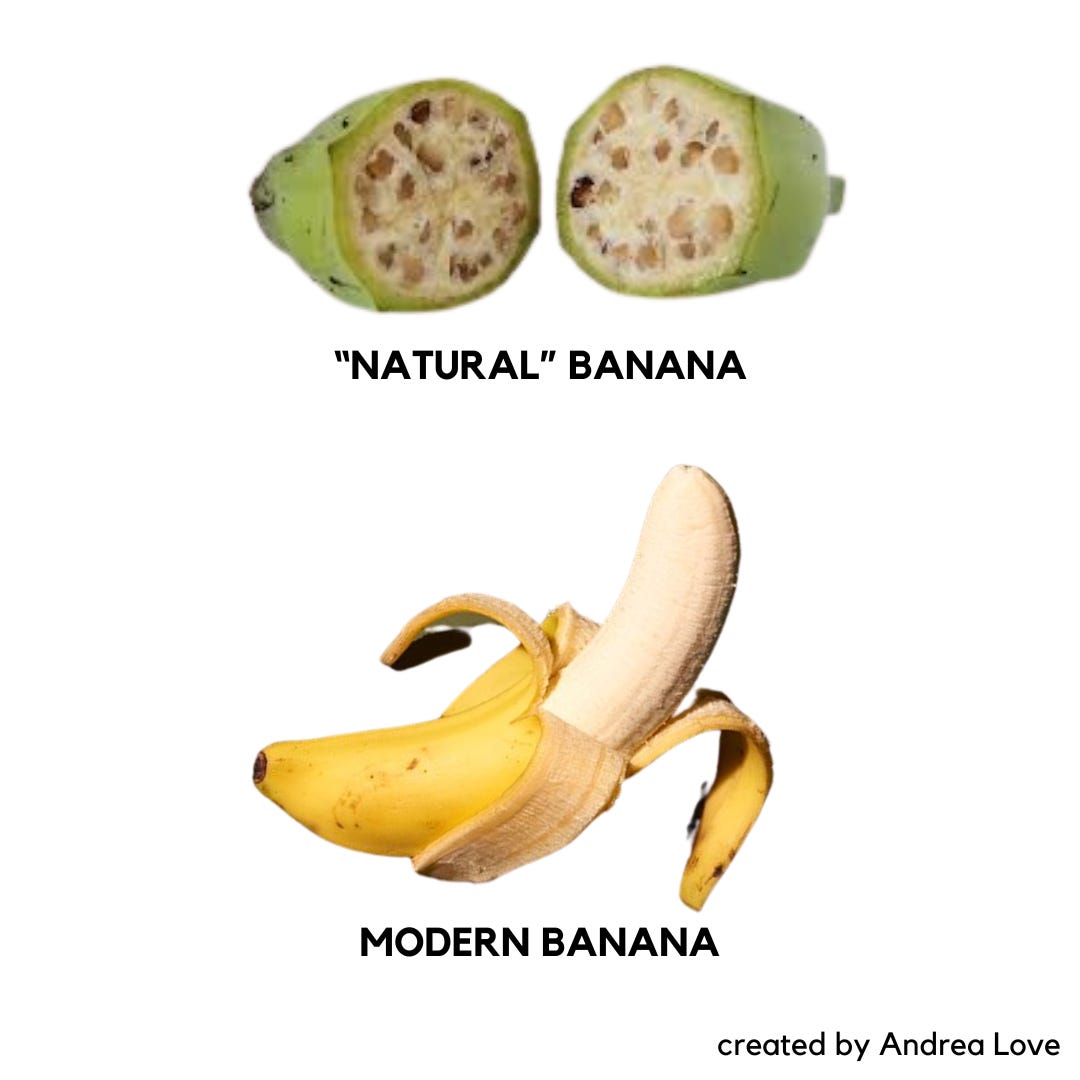The appeal to nature fallacy is the false belief that "natural" is better
Plenty of natural things can be extremely harmful at tiny exposures
Logical fallacies are errors in reasoning that can lead to false conclusions.
They are flawed patterns of thought that often seem correct on the surface, but are misleading or outright false. While they can be accidental or due to unwittingly falling prey to misinformation, they are frequently used to sway people’s perceptions or beliefs even in the face of actual facts. Unfortunately, more often than not, logical fallacies in the context of science and health are used intentionally, and they cause real harm. Logical fallacies often appear together, when someone is utilizing multiple logical fallacies concurrently to make a false claim.
Common examples include the appeal to emotion (exploiting emotions to win over your audience), the appeal to authority (using a person’s position as support for why they must be correct, a la Huberman), ad hominem attacks (attacking the person instead of the argument), false dilemmas (presenting two options as the only possibilities when there are more), and Post hoc ergo propter hoc (assuming that one thing caused another merely because the first thing happened prior).
Arguably the most prevalent and pervasive logical fallacy? The appeal to nature.
The appeal to nature fallacy is the false belief that things considered “natural” (i.e., derived from or found in nature) are better, good, beneficial, right, or safer simply because it's considered 'natural'. Alongside this, anything deemed 'unnatural' or artificial or synthetic is positioned as bad, harmful, dangerous, inferior, and unsafe. It falsely equates 'natural' with 'good', and exploits low chemistry literacy and critical thinking. As you can imagine, the appeal to nature fallacy goes hand in hand with the appeal to emotion: if people FEEL that something is better or the alternative is bad, they will be more likely to believe this information, even if it is false.
Natural is not inherently “better” or safer.
There are obvious flaws with the appeal to nature. Countless things that are considered natural can be harmful and many synthetic or artificial things can be safe and beneficial.
Before we dig into this, you must remember that EVERYTHING is chemicals.
How we interact with chemicals is completely irrespective of the source of a chemical. Our body doesn’t know whether the chemical was isolated from a natural substance or whether it was synthesized entirely in a lab. The things that matter are the dosage of the chemical, the route of exposure of the chemical, and the chemical nature of the chemical. And yes, I’m going to use the word chemical a lot here, because I want you to stop associating the word chemical with “bad” or “toxic” and start associating it with life.
Water is a chemical.
Air is chemicals.
You are chemicals.
You would not exist if it weren’t for chemicals. Your body is a network of chemicals that interact with each other in a highly regulated and coordinated fashion. Your cells are networks of chemicals that aggregate to form structure and function. Your brain functions as a result of chemicals. Your immune system functions because of chemicals. Your food - whether an apple picked off the tree or a box of Goldfish crackers - are chemicals. Your pets are chemicals. Your car is chemicals. Your house is chemicals.
And yes, that is true for chemicals once upon a time discovered in nature or for chemicals created entirely within a lab.
The source of a substance has no bearing on its safety or potential harm.
With everything, the dose makes the poison. That’s true for natural chemicals or substances and for synthetic (or artificial) substances. Natural simply means derived from sources in nature, whereas synthetic means a substance was altered or created in a laboratory. They are all still chemicals, and plenty of natural things have high toxicity.
Let’s talk about some examples of natural substances.
For mental reference: one-quarter teaspoon of regular granulated sugar weighs about 1 gram.
Arsenic is a naturally occurring element that is found as part of inorganic compounds throughout the environment: in soils, sediments (rocks and minerals), and in our groundwater. Beyond that, arsenic is released into the air through volcanic eruptions, natural erosion of arsenic-containing sediment, and by industrial processes like smelting. Arsenic in the form of arsenic trioxide is formed when arsenic in these natural sources combines with air (another chemical). Arsenic trioxide is readily absorbed in the digestive tract, and can be fatal if ingested at a dose of 0.002 grams per kilogram. That means an adult weighing 70 kg (154 lbs), can be killed if they ingest 0.1 grams of arsenic trioxide.
Botulinum toxin is a protein toxin produced by the bacteria Clostridium botulinum (all natural!). Colloquially referred to as “Botox”, Botulinum toxin is considered a neurotoxin, as the protein interferes with neurological function. Specifically, it prevents acetylcholine release by interfering with an essential protein complex called the SNARE complex. By doing so, acetylcholine cannot be released, which causes muscle weakness, lack of muscle contraction, and flaccid paralysis.

Botulinum toxin is the cause of the disease Botulism. While many people think of that as a bacterial infection, it is not the bacteria Clostridium botulinum itself, but the protein it produces that lead to the disease. Medically, we use Botulinum toxin for a variety of uses: most people associate it with cosmetic procedures for facial wrinkles, but it is also used therapeutically: chronic migraines, colorectal surgeries, esophageal procedures, overactive bladder, hyperhidrosis (excessive sweating), and more. These procedures involve a targeted injection of Botulinum toxin (remember, the dose AND the route of exposure matter). A dose of Botulinum toxin as low as 0.0000000004 grams per kilogram, if ingested, can be fatal. That means a 70 kg adult would only need to consume 0.028 micrograms of this natural protein to die. This is how Botulism is fatal - through ingesting food products contaminated with Clostridium botulinum that has produced toxin.
Copper sulfate is a fun example because it speaks to the fallacies related to organic versus conventional pesticides for agriculture. Copper sulfate is found ubiquitously in many different forms as inorganic minerals throughout our planet. It can be found in the form of the mineral chalcocyanite, chalcanthite, bonattite, boothite, poitevinite, langite, posnjakite, and more. (can we get a geologist in here?!) I digress. Copper sulfate is a naturally occurring chemical that: is also used as an organic pesticide. If you recall, I wrote about the fallacy that organic farming is “pesticide free” in my Dirty Dozen piece here.
Copper sulfate is used in organic farming as a fungicide and bactericide to control a variety of diseases like powdery mildew, blight, and others. However, copper sulfate has broad spectrum toxicity: it can be harmful to much more than just fungal and bacterial pathogens. Copper sulfate can kill fish and aquatic invertebrates (snails, crab, shrimp), beneficial soil microorganisms, terrestrial invertebrates (like earthworms), bird species, and yes, even mammals including humans. Copper sulfate can be fatal to humans if ingested at 0.011 grams per kilogram. That same 70 kg (154 lb) adult? 0.77 grams of copper sulfate can cause acute toxicity and death. But definitely, organic pesticides are way better, right?
There are countless chemicals produced by plants in nature that are extremely toxic at low doses too. It’s because of evolution. Plants can’t actively fight off organisms that are trying to eat them, whether they are arthropods like caterpillars and ants, or herbivores. So what do plants do? They evolve to produce chemicals that will deter that. One example for the sake of length here. The rosary pea or jequirity bean is a flowering plant native to Asia and Australia, species name Abrus precatorius. The seeds of this vining plant are commonly used to make jewelry and percussion instruments like rattles and drums.
But contained within those brightly colored seeds is a chemical called abrin, which is a potent toxin. Abrin is a protein that consists of 2 subunits, and is considered a toxalbumin: plant proteins that have broad systemic effects due to their ability to interfere with essential functions of every cell in our bodies. Abrin can be toxic through multiple routes: ingestion, inhalation, intravenously, and topically. Many people have heard of ricin, a similar toxalbumin produced by the castor bean. Abrin is up to 100 times more toxic than ricin: 10 - 1000 μg/kg if ingested and even lower dosage if inhaled can be fatal. That means a single seed chewed (not even swallowed as the abrin simply needs to be released and swallowed in saliva) can kill someone.
Other natural things that can kill you? Every pathogenic microorganism out there.
Viruses, bacteria, fungi, protozoa, helminth parasites. These are all natural too.
Smallpox virus is natural. So is SARS-CoV-2. And poliovirus. And Rabies virus. And Yersinia pestis, the bacteria that causes plague. So is Bacillus anthracis, the bacteria that causes Anthrax. Malaria, caused by the protozoan parasites in the Plasmodium genus, that’s natural too. Naegleria fowleri, the “brain-eating amoeba”? All natural.
On the converse, there are countless man-made or synthetic substances that are not only safe at similar doses, but beneficial.
Vaccinations. Antibiotics. Pharmaceutical medications. Medical devices. Computers. Antiseptics. Conventional pesticides. Genetic engineering technology.
Many of these things were derived from something found in nature, but were improved upon using our knowledge and scientific technologies.
For example, aspirin, (chemical name is acetyl salicylic acid), is distantly related to a chemical found in willow bark, called salicin. Salicin can be chemically converted into salicylic acid. Both of these chemicals had some therapeutic properties, but you needed high dosages and there were some undesirable side effects. Stomach cramping, stomach bleeding, diarrhea, vomiting, heartburn. Sounds fun! But early scientists appreciated the potential of these compounds, and, through chemical synthesis, made a more potent and better tolerated version: aspirin. Aspirin exerts pain-relieving and anti-inflammatory effects at far lower dosages than its natural relatives with far fewer potential side effects.
Vaccinations, created from components of a pathogen, protect against potentially fatal illnesses by training your immune system in advance of pathogen exposure. Often, people use the appeal to nature fallacy to refuse vaccines, claiming that natural immunity is superior to vaccine-induced immunity. They fail to acknowledge that first, this is not based on any scientific evidence, and second, infection comes with risk of illness and death. Even for pathogens like the measles virus, where “natural immunity” is quite robust (and more robust in this instance than vaccination), that’s not a good thing. Measles can cause serious complications and death, which I discussed previously. And that potent natural immunity? It can wipe out your memory to other pathogens, causing immune amnesia. That’s not great.
Many synthetic pesticides used in conventional farming have been adapted from natural pesticides that are used in organic farming. Often, these alterations improve the stability, specificity, and efficacy of the chemical in question, so that farmers can apply lower concentrations to have the same impact and do not inadvertently target species they do not want to. An example: pyrethroids are synthetic derivatives of pyrethrins, chemicals produced by the Chrysanthemum cinerariaefolium plant. Pyrethrins are, more specifically, pyrethrin I, pyrethrin II, cinerin I, cinerin II, jasmolin I, and jasmolin II.
Pyrethrins are considered excitotoxic chemicals to insects: they lead to excessive signaling of their neurons, causing paralysis and death. These chemicals degrade rapidly when extracted from the plant and exposed to sunlight, meaning that in order to have their exerted effect, they must be applied frequently. More than that, since these are extracted from harvested plant species, the composition of these chemical mixtures (and potency) is highly variable. Pyrethroids are altered versions of the pyrethrins, where the known chemical identify and concentration is constant. These chemical alterations improve their stability, which means you can apply less for the same result.
The appeal to nature fallacy is everywhere.
Many people believe that “natural” foods are better than “processed” foods. I discussed the fact that there is no standardized meaning of processing here, but processing is essential for food safety. It is also fallacious to assume that something is automatically better for you just because it's natural. For instance, cyanide is a naturally occurring substance found in certain plants, but like every chemical, it can be toxic to humans at certain doses. On the flip side, many foods that fall under the perception of “processed” have been altered to improve shelf life, increase stability of nutrients (even freezing of produce can be beneficial), or reduce the risk of contamination from disease-causing microorganisms through the addition of preservatives.
In the wellness space, the appeal to nature fallacy is particularly harmful. Too many people assume that natural or herbal remedies are safer or more effective than pharmaceutical drugs. While some natural chemicals may have medicinal properties at certain dosages (see above re salicin), dietary supplements, including all herbal supplements, are not regulated for safety. Beyond that, the vast majority of them have not been scientifically proven to even be effective or safe for consumption. On the converse, FDA-approved medications undergo rigorous testing and regulation to ensure their safety and efficacy.
Of course, the appeal to nature fallacy arises when people argue against using genetic technologies for environmental or agriculture use, claiming that ‘altering DNA’ of plants goes against the natural order. Opponents of genetically modified organisms (GMOs) often claim they are unnatural and harmful to the environment, ignoring the fact that GMO crops are the most studied crop species on the planet, and the vast potential benefits of GMOs in addressing food security and sustainability. Additionally, they fail to recognize that humans have been intervening through a variety of genetic alteration methods for thousands of years, whether it be through radiation or chemical mutagenesis, selective breeding, hybridization, plant grafting, or more. I don’t think anyone would want to eat a “natural” banana:
The appeal to nature fallacy harms public health, science literacy, and technological advancement. It is particularly pervasive, as it connotes a romanticization of past eras, when things seemed simpler. In reality though, “natural” is a meaningless term in the context of chemistry, and one of the strengths of humans as a species is to learn and use the information we acquire to improve upon things that are natural in order to benefit society and increase the quantity and quality of our lives.
If you come across people making claims solely on the statement that something is “natural”, remember this. And with EVERYTHING, natural or synthetic, the dose makes the poison. Don’t let people prey on your emotions to mislead you and create fear.
Thanks for joining in the fight for science!
Thank you for supporting evidence-based science communication. With outbreaks of preventable diseases, refusal of evidence-based medical interventions, propagation of pseudoscience by prominent public “personalities”, it’s needed now more than ever.
Your local immunologist,
Andrea






